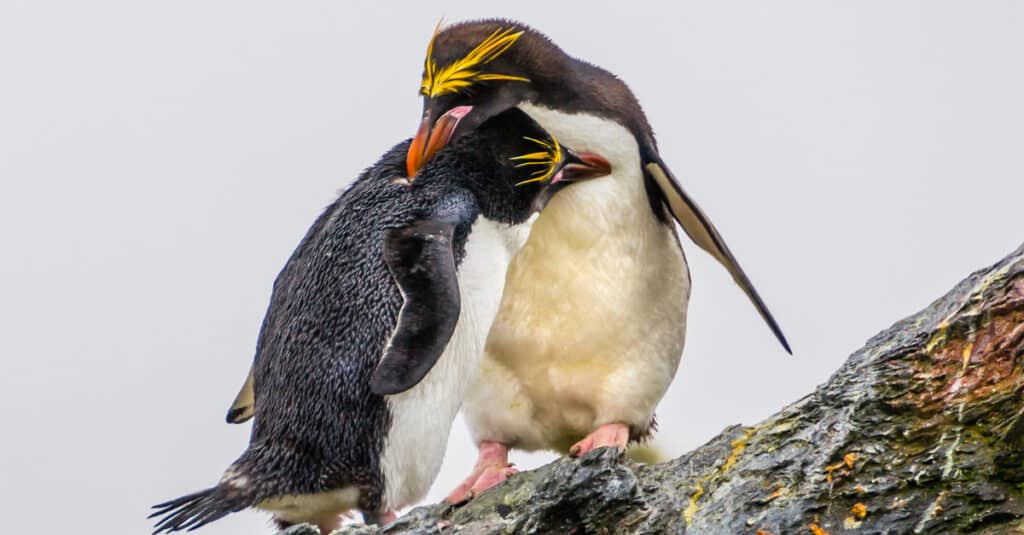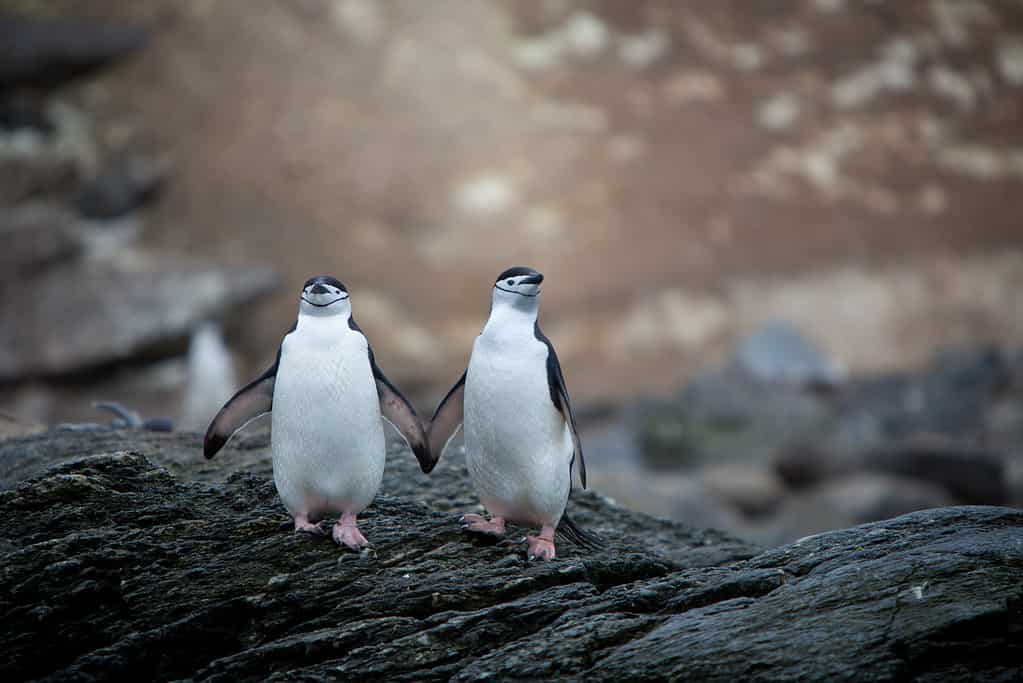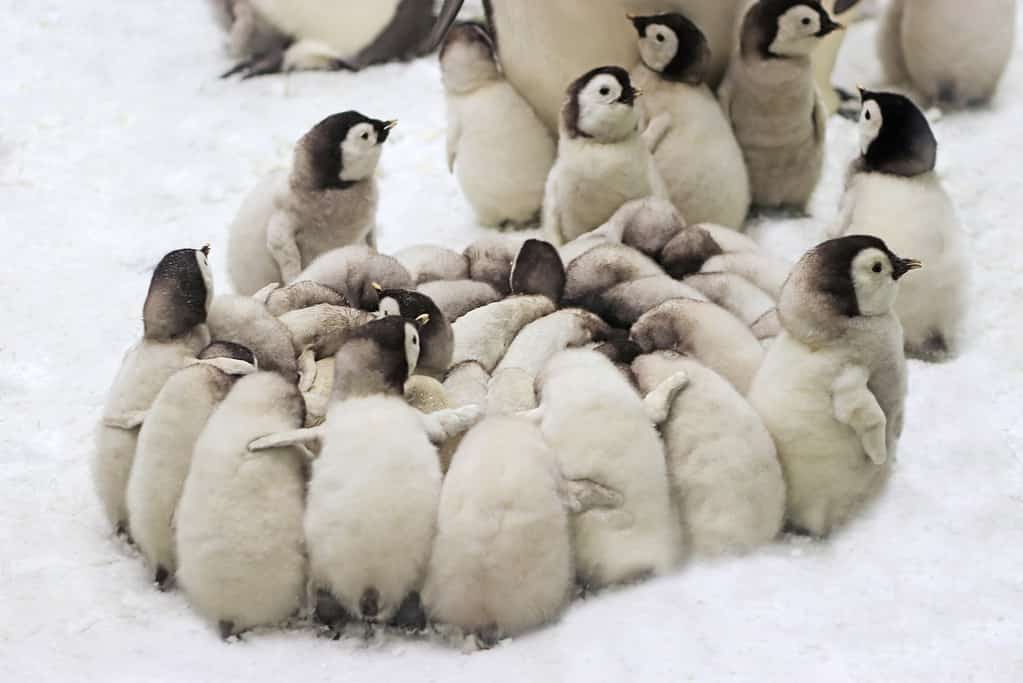While there are plenty of entertaining and heartwarming movies about the beloved penguin, whether or not these animals are monogamous remains a question without a straight answer. It all depends on how you define monogamy.
Penguins do remain with the same mate during the mating season, proving that they are monogamous. Yet they don’t always have a lifelong relationship with the same partner. Up to 85% of some species of penguins will find a new mate the following year, and some will even perform extrapair copulation… in other words – cheating.
Penguins and Fidelity
Absolutely, penguins only have one breeding mate at a time since they are monogamous. In raising their offspring, both the male and female will participate. It varies between species and frequently between various colonies of the same species in terms of the number of pairs that stay together for more than a single breeding season.
For instance, emperor penguins have a greater number of divorces than most other penguin species, at over 85%. Although they only have one breeding partner per phase, they will have a large number of partners during their lifetime.
Male Magellanic penguin mate faithfulness is 86% while female mate fidelity is 83%. It has been discovered that breeding success and faithfulness are closely associated. Normally, couples will only look for a new partner if they are unable to have kids.
At Punta Tomba, one couple has been observed mating for 17 years in a row. In addition, they are incredibly devoted and unlikely to engage in cheating behavior. Because of the fact that they do not arrive at the molt at the same time as their spouse, king penguins have a low rate of faithfulness (28.6%). Now, if only there were couples therapy for penguins.

Penguins are monogamous, only have one breeding mate at a time, but they may change partners the following year.
©Tetyana Dotsenko/Shutterstock.com
Why Do Penguins Change Partners?
The same partner is not chosen by a penguin for life. They often stay together for one breeding season, but there is no assurance that they will mate with the same individual again the following year.
A divorce occurs when a penguin mates with a new partner while their previous partner is still alive. Several species of penguins have various divorce rates, which is the percentage of penguins that select a new breeding mate from the previous mating season.
It is well known that chinstrap and gentoo penguins, which get back together the next breeding season in 82% and 90% of cases, respectively, have high levels of faithfulness. The restricted mobility of gentoo penguins over their breeding region enables pairs to maintain a close relationship throughout the year, which accounts for their high fidelity.
If a female Fiordland penguin returns to find her former mate with a new lover, she is known to react negatively. There may be violent altercations that force the new partner to leave.

Chinstrap penguins display a high level of faithfulness with the majority getting back together the next breeding season.
©Chris Venne/Shutterstock.com
Do Penguins Experience Love?
If we consider love to be a feeling of affection, then yes, it is conceivable for penguins to fall in love, albeit it is unlikely that they would feel romantic love to the same degree that humans do. In a penguin partnership, procreation and raising young are the key goals.
Because they are birds, penguin relationships share many characteristics with those in human relationships, including complex courtship, monogamy, and displays of devotion.
The sharing of parental responsibilities, including guarding, nursing, and providing for their young, is one of the most striking parallels between penguins and people. The majority of species, including birds and mammals, have an impulse to protect their offspring.
Penguins are able to recognize their partners and, for the most part, remain faithful partners throughout the breeding season.
Nonetheless, a significant portion of the partnership is focused on having offspring, and if breeding is fruitless, they will often search for a new partner. This shows that “penguin love” is different from human romantic impulses in that it is primarily about creating a family and the advantages of cooperative parenting.

Penguin couples often share the parental responsibilities which include guarding, nursing, and providing for their young.
©Alexey Seafarer/Shutterstock.com
How Do Penguins Show Affection?
Although many creatures don’t communicate affection in the same way that humans do, they nonetheless exhibit loving behaviors. One such creature that exhibits an emotional link in many different ways is the penguin.
Penguins will never be seen on a date, smooching in the last row of the cinema, but they have redefined the term “kiss” in order to protect their young, further illustrating their intense emotional connection.
Instead of kissing to express affection, a penguin will brush against its partner’s face and body, maybe to transfer body heat in the subzero conditions of its home. While some may perceive this as a survival strategy, scientists generally see it as intense love.
Penguins are sociable creatures, and although you won’t see them giving their guests hugs and kisses at a dinner party, their passion for their flock is evident in their actions. Since the fathers are guarding the eggs while the mothers have fled in search of nourishment, the flock will band together to defend one another from the cold temperatures.
The sheltering circle will shift and change as individuals warmed by body heat migrate to the edge of the circle to make room for others to enjoy the flock’s warmth.

Penguins will create sheltering circles to help protect the flock against harsh cold temperatures.
©iStock.com/Gabriele Grassl
The photo featured at the top of this post is © Ondrej Prosicky/Shutterstock.com
Thank you for reading! Have some feedback for us? Contact the AZ Animals editorial team.






